What are Neutral Density filters and which ND filter should you use?
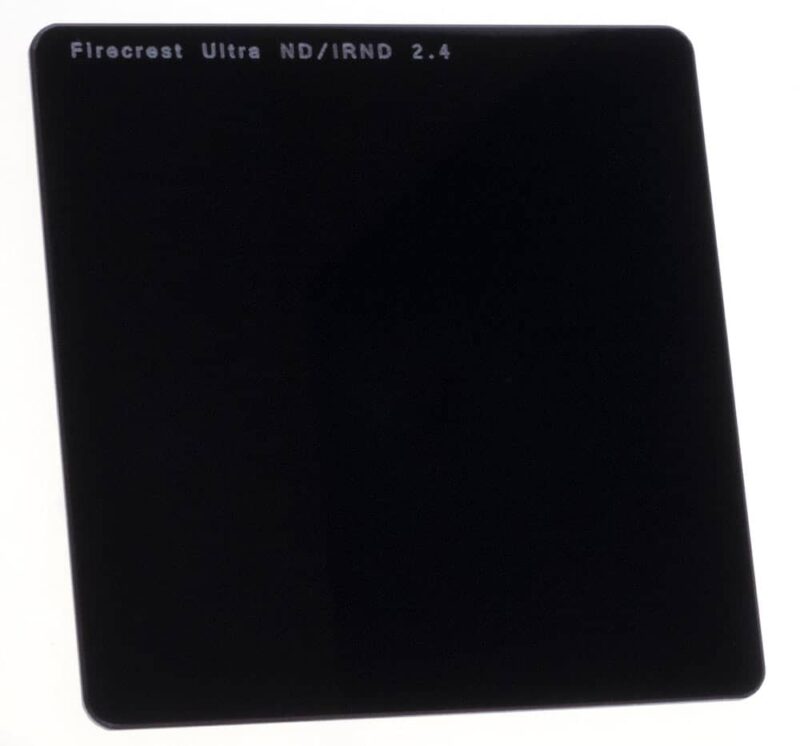
What are Neutral density filters?
Photography filters spark vicious debate on a near daily basis on social media. As there is sadly a lot of misinformation about “filters” out there now as people get confused between real photography filters (sheets of special glass) and “Instagram” filters.
Neutral Density filter or ND filters as they are more commonly called in photography are basically special dark glass filters that are designed to drop the light level entering your camera. This drop in light level means your camera needs to take a longer photograph to let enough light in to expose the photograph correctly.
Basically ND filters are like sunglasses for your camera.
Which is why it is used a lot in Long Exposure photography. This longer exposure gives you far more creative control in your image so you can accentuate movement for instance.see the photograph for longer to give you more creative control of your image.
These ND filters are available in a lot of different strengths, the most popular ones are 4 stop, 6 stop, 10 stop, 13 stop and 16 stop ND filters to name a few of the popular ones.
The “stop” part of the filter name refers to the light stopping power of the filter or resistance it provides to light. One stop reduction is halving the light level passing through the filter so a 4 stop ND filter is only letting through 1/32 of the light into your lens.
Again all that basically means is that your camera then has to see the image for longer to let enough light in to expose the image correctly which creates long exposure images. Now if you are think wow that all sounds a bit too complicated then don’t worry the good news is that there are plenty of apps for your phone that you can use to help make it easier for you.
I have a blog post on What ND Filter do I need which might help you decide which one is for you if you are considering which strength filter to buy.
How do you know which filter to use when you are out taking photographs?
Well it’s not as complicated as you might think, I use my phone and the “ND Expert” app to calculate the correct filter I need for the type of photograph I want.
It takes all the complexity out of using filters for people starting out.
Step one is to check what your shutter speed is at without the ND filter in place.
For this example we will say 1/250th of a second for a properly exposed image.
Open the app and simply pop in 1/250th in the shutter speed box.
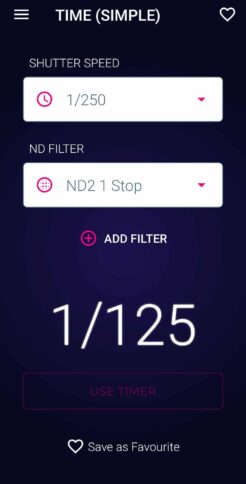
Once you click on the shutterspeed box a drop down menu appears like below and you simply enter the correct shutter speed by tapping on it.
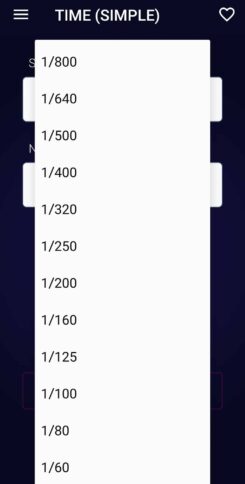
Next you click on the ND filter box and a selection like below pops up and you can select the ND filter from the list you want to use. If you have a few filters and are unsure which one to select then just go for your strongest filter and if the time is too long then simply work backwards from there. You will notice that every time you decrease the strength of the filter the time of the exposure also decreases.
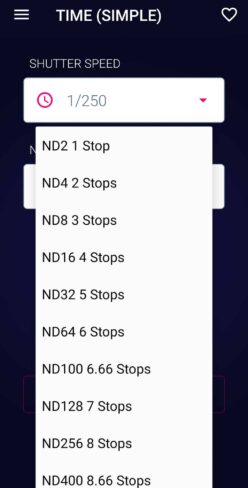
Once you have clicked on the correct filter the app shows you the time it takes to capture the image.
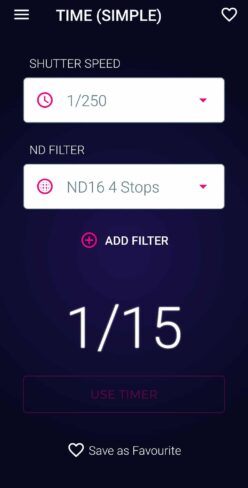
You can then try different strength ND filters and the app will give you the correct exposure time for each filter. The above was with a 4 stop ND filter and the below is with a 6 stop ND filter.
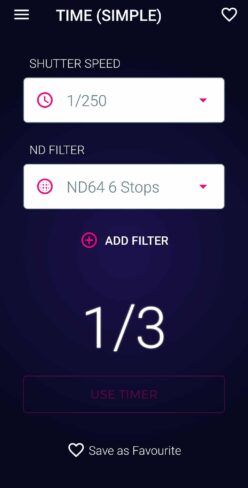
The shot below is with a 10 stop ND filter
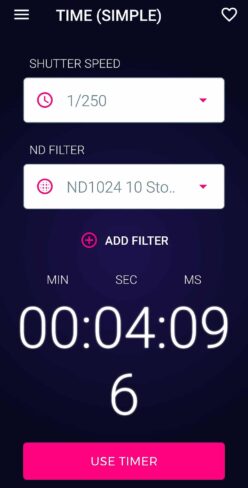
The shot below is with a 16 stop ND filter so you can see how these filters vary the exposure time or how long it takes to capture the image.
This delay or longer exposure creates motion blur in moving images and can be used for fantastic effect in seascapes and landscape photography.
A selection of images below show how using ND filter help to create this surreal effect and it is all done in camera.
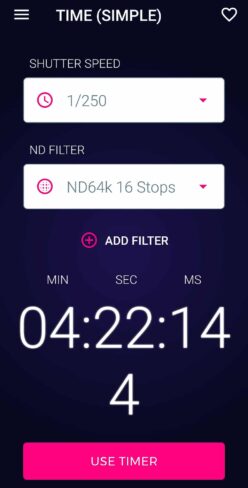
Real photography ND filters are glass elements which either screw onto the front of your lens or slide into a filter holder that’s fitted to your lens.
These filters have an immediate effect on your photograph and all these effects are done in camera and not via editing. Yes it alters the capturing of the photograph but only to the way the photographer see’s it in their head.
An ND filter blocks light so your cameras shutter needs to be open for longer to take in enough light to make your photograph or expose the image correctly. This can be used for creative effect, see the two raw unedited photographs below taken seconds apart of exactly the same scene and settings apart from shutter speed.
The second image has to see the scene for longer to take in enough light as the 6 stop ND filter on the camera lens is blocking out a lot of the light.
With this delay in the image being captured we can capture all the movement of water, cars, people etc…
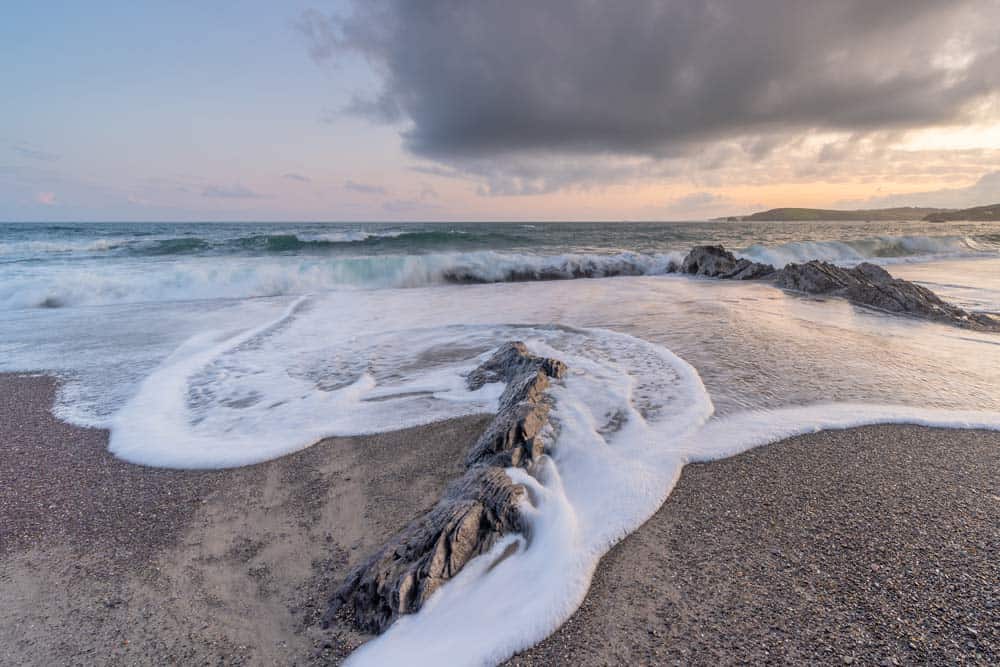
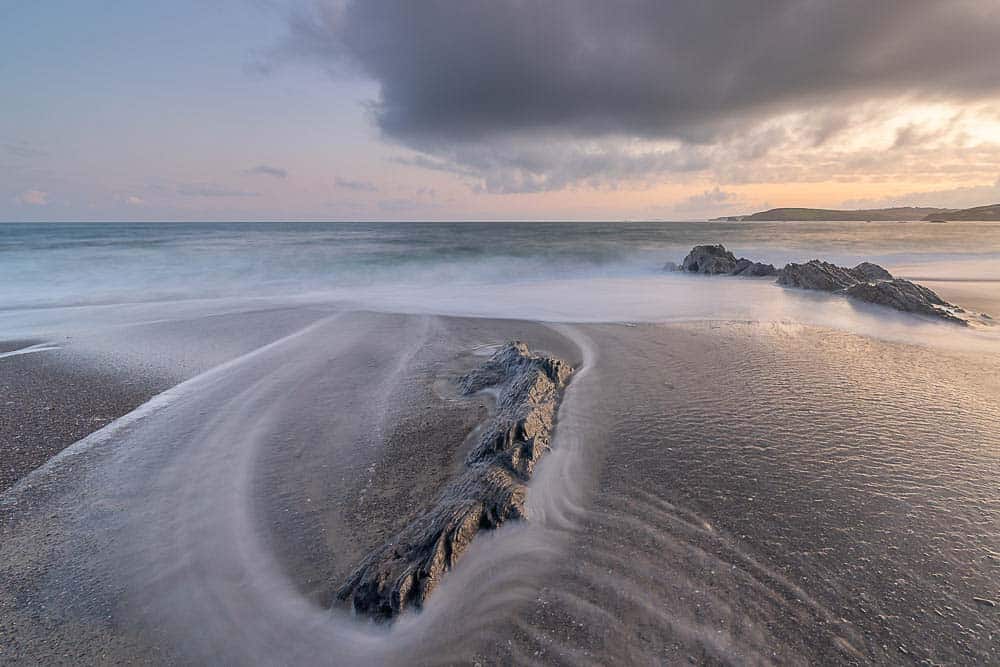
So a ND filter lets us capture and introduce movement into the photograph, my own thinking on this is it gives us more of a creative license with what is happening before us. It makes us look past the real to create the surreal out of a moment in time.
Graduated Filters.
The second type of Filter is a Graduated ND filter, this filter is simply used to balance the light in your image. If you are taking a photograph of a beach for example at sunset. The sky will be very bright from the suns light but the beach could be dark so we can use a graduated filter to darken the top part of the photograph which basically means it will help balance out the image. As you can see from the photograph below the top part is harder for the light to go through so it drops the intensity of the light in the top part of the image.
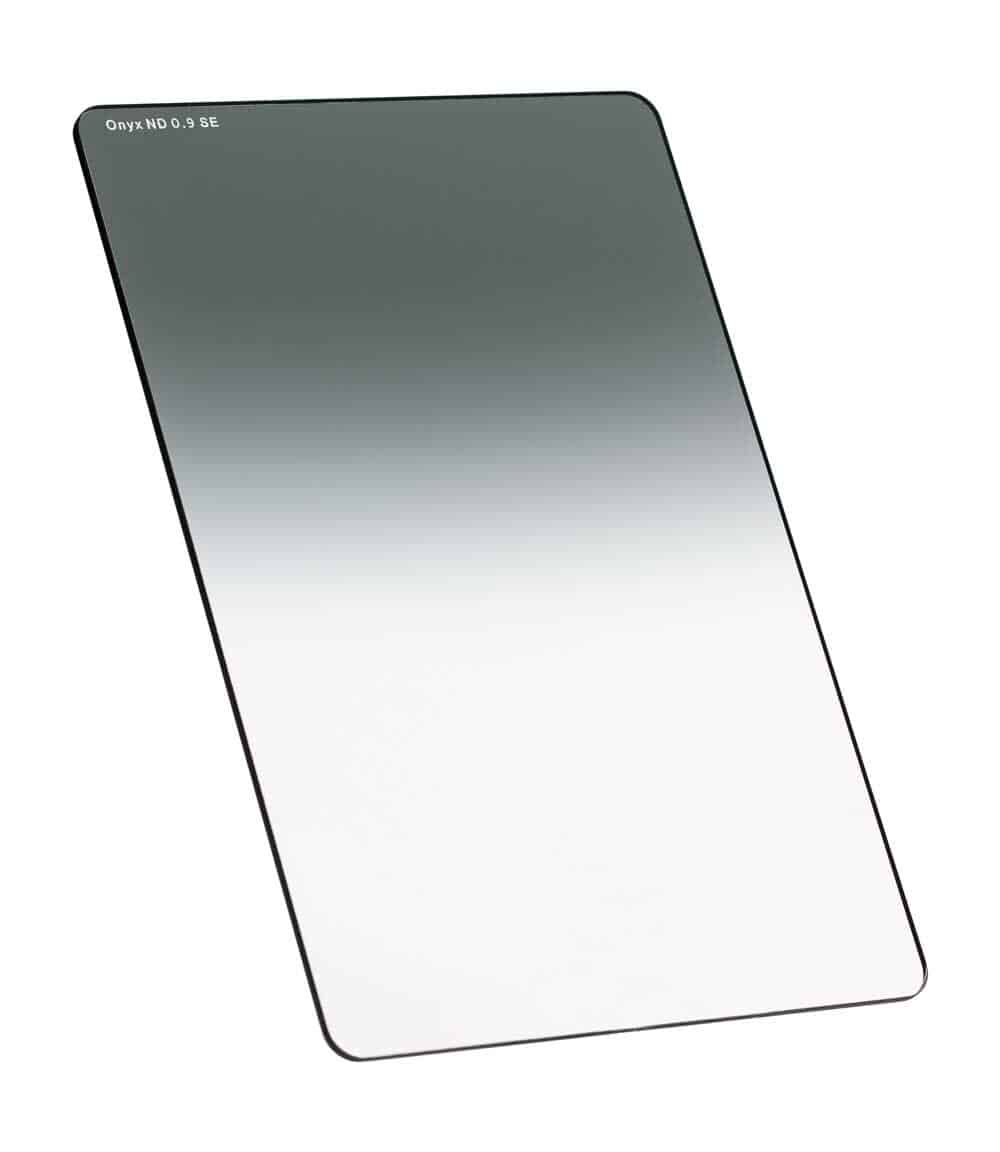
Now if we are to get technical on Graduated filters you will see there are several types of Grad filters but that’s another blog post all in itself 🙂
If you want to try out some ND filters then why not join me on one of my photography workshops where I will talk you through them, their use and let you have a go of using them yourself for the day.
I use and trust Formatt Hitech Firecrest filters and the Firecrest filter holder to achieve the results I am looking for. They have never let me down yet.
See you out there,
Kieran.
